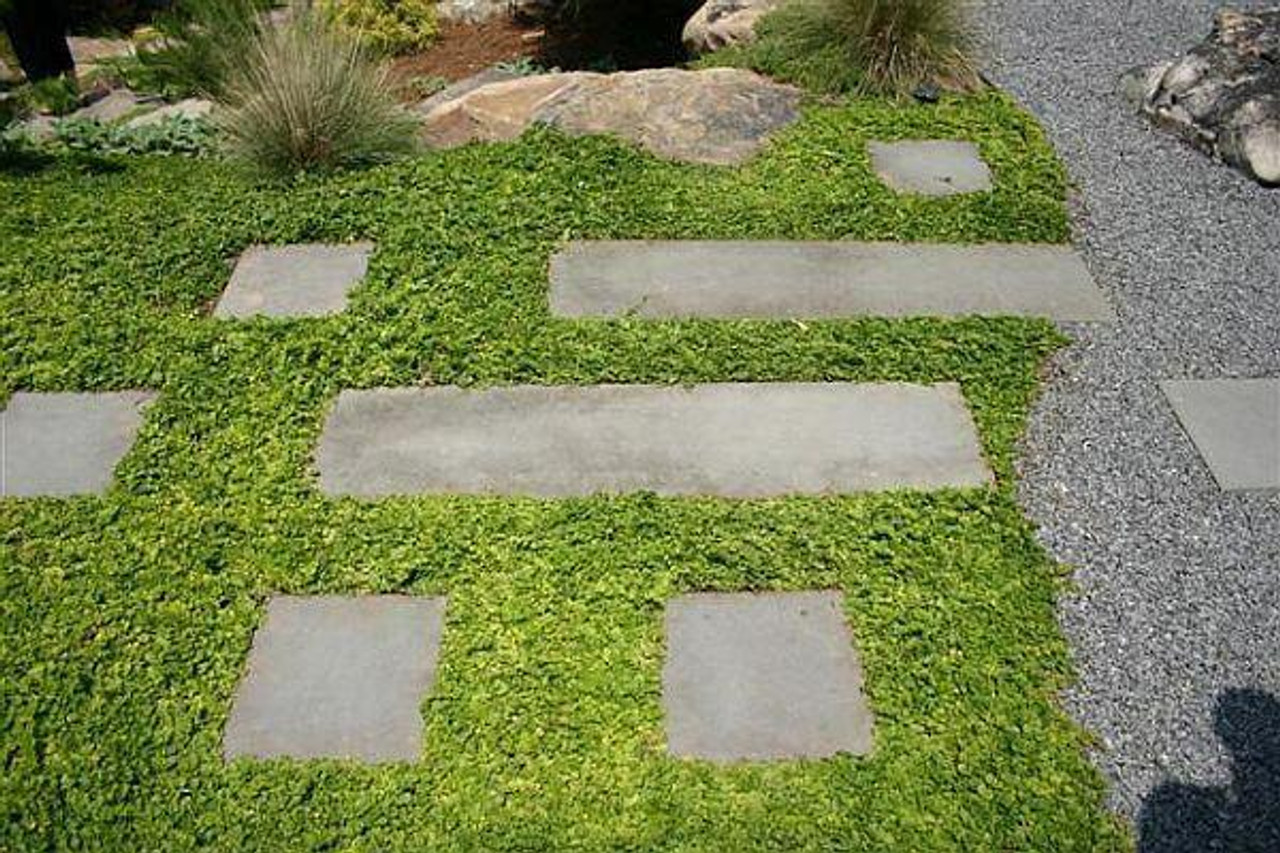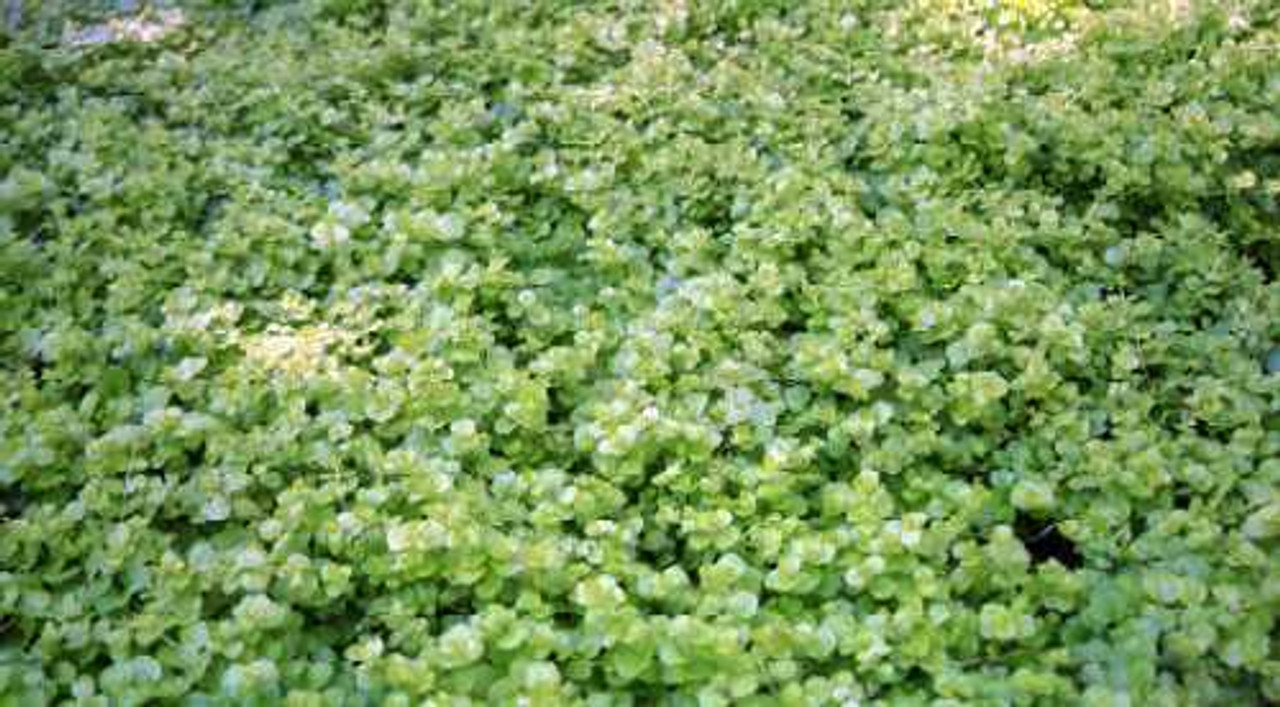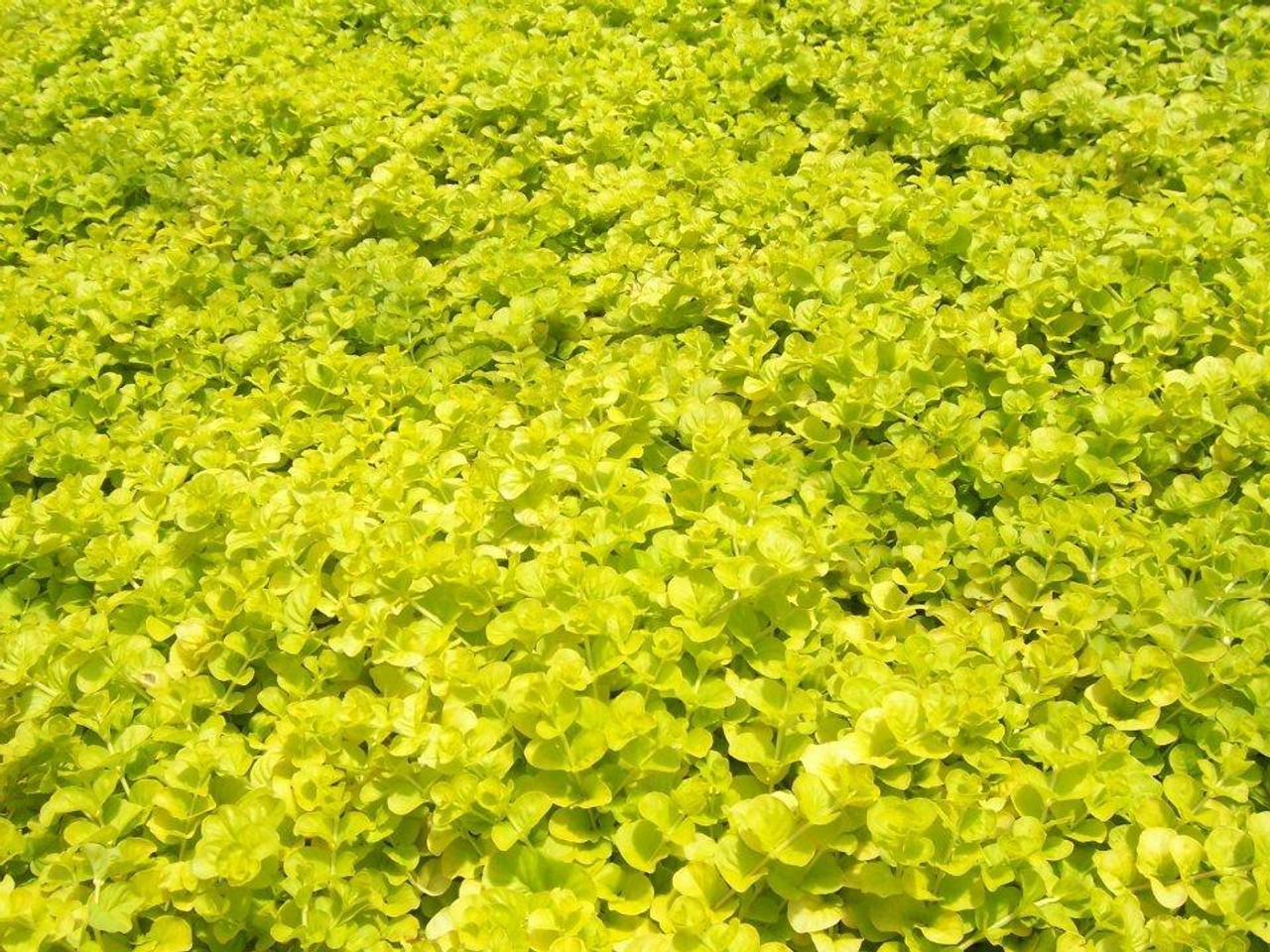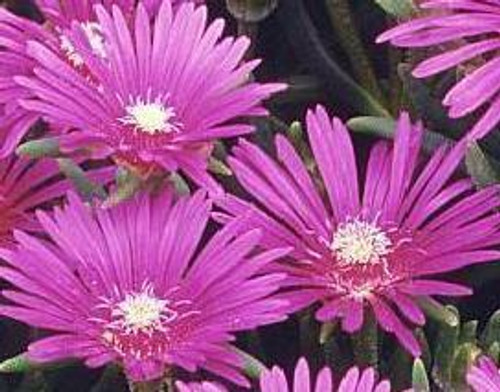Product Description
Lysimachia nummularia 'Aurea' (3.5-inch pot)
Golden Creeping Jenny
- Height: 2-6 Inches
- Spread: 12-18 Inches
- Hardiness Zone: 3-9
- Visually striking Lime Green to Yellow Foliage
- Dense, mat-forming habit
- Spreads quickly
- Use as ground cover or in containers
- Good for wet areas around ponds, streams and waterfalls
Lysimachia nummularia 'Aurea' is a low-growing, evergreen perennial that is native to Europe. It is a member of the primrose family (Primulaceae). Golden creeping Jenny is a vigorous grower and can quickly form a dense mat of visually striking foliage. ¾" leaves are a brilliant yellow when grown in full sun, or lime green to chartreuse in the shade. The flowers are small, cup shaped and bright yellow, appearing in early summer.
Golden Creeping Jenny is a very versatile plant that can be used in a variety of settings. Easy to care for, 'Aurea' spreads aggressively, rooting along nodes as it creeps along the ground. Tolerating foot traffic adds to its popularity as a groundcover. It can also be grown in containers, hanging baskets, or rock gardens.
Golden Creeping Jenny prefers full sun to partial shade in moist, well-drained soil. Lysimachia nummularia 'Aurea' thrives in moist to wet areas where other ground covers cannot. The plant is not particularly drought-tolerant, so it is important to water it regularly during the summer months. It is a good choice around ponds, streams and waterfalls as it cascades over rocks and walls.
Brighten Up Shady Spots with Golden Creeping Jenny!
Lysimachia nummularia 'Aurea', commonly known as Golden Creeping Jenny, is a vigorous and versatile groundcover prized for its vibrant golden foliage and cheerful yellow flowers. This low-maintenance perennial thrives in moist, shady areas, making it an excellent choice for brightening up those challenging spots in your landscape.
'Aurea' is a cultivar of Creeping Jenny, distinguished by its bright, golden-yellow leaves. The small, rounded leaves create a dense, carpet-like groundcover that adds a cheerful touch to shady gardens. In early to mid-summer, 'Aurea' produces cup-shaped, bright yellow flowers that add an extra layer of interest. This plant is a vigorous grower, spreading quickly to form a lush, weed-suppressing mat. It is also highly adaptable, tolerating a wide range of soil and light conditions.
- Mature Size: 3-6 inches tall, spreading 12-18 inches or more
- Foliage Color: Golden yellow
- Flower Color: Bright yellow
- Bloom Time: Early to mid-summer
- Growth Habit: Trailing, spreading groundcover
- Light Needs: Full sun to part shade (tolerates full shade, but foliage color is best in sun)
- Soil Needs: Moist, well-drained soil; adaptable to various soil types
- Hardiness Zones: 3-9 (USDA)
- Special Features: Attractive foliage, bright flowers, vigorous grower, weed-suppressing, adaptable, low maintenance
Planting:
- Timing: Plant in spring or fall for best results.
- Location: 'Aurea' thrives in moist, shady locations. It can tolerate full sun in cooler climates, but in hot areas, it's best to provide some afternoon shade.
- Soil Preparation: While adaptable to various soil types, amending the soil with compost or other organic matter will improve drainage and fertility, promoting healthier growth.
- Spacing: Space plants 12-18 inches apart to allow for their spreading growth habit. Closer spacing will result in faster coverage.
- Planting Depth: Plant at the same depth as the nursery container.
- Watering: Water thoroughly after planting and regularly until it is established.
Care:
- Watering: 'Aurea' prefers consistently moist soil. Water regularly, especially during dry spells.
- Fertilizing: Fertilize in spring with a balanced fertilizer to promote vigorous growth. Avoid over-fertilizing.
- Pruning: Trim or prune as needed to control spread or maintain shape. You can also shear it back in late winter or early spring to rejuvenate growth.
- Mulching: Apply a layer of mulch around the plants to retain moisture, suppress weeds, and protect the shallow roots.
- Pest and Disease Control: 'Aurea' is generally pest and disease resistant. However, watch for occasional issues like rust or leaf spot.
Uses in the Garden:
- Groundcover: Ideal for creating a low-maintenance, colorful groundcover in shady areas.
- Borders and Edging: Adds a bright touch to borders and edges along pathways or flower beds.
- Containers and Hanging Baskets: The trailing habit makes it perfect for cascading from containers and hanging baskets.
- Rock Gardens: Can be used to soften the edges of rocks or add color to rock gardens.
- Water Gardens: Can be grown at the edges of ponds or streams as long as the roots are not submerged in water.
- Erosion Control: Its spreading habit can help stabilize slopes and prevent erosion.
Important Note: While 'Aurea' is less aggressive than the species, it can still spread vigorously in ideal conditions. It is essential to monitor its growth and control its spread as needed to prevent it from becoming invasive.
Brighten up your shade garden with the cheerful golden foliage of Lysimachia nummularia 'Aurea'!
Other Details
The most important part of the plant is its root system. Healthy roots are the foundation of a healthy, vibrant plant. The type of plug container used is based on the specific needs of the plants. Perennials offered as bare root traditionally perform better when planted as bare root.Planted in a specialized mix, potted plants have well established root systems. Top growth stage will vary depending on the current life cycle and time of year when shipped. In Winter and early Spring dormant plants may be shipped. Dormant plants may be planted right away, even before the last frost date.
Most bare root varieties are field grown for at least one season, though Hemerocallis and Hosta are grown for two seasons. The bulk of the soil is removed during the harvesting process and the tops of most varieties are trimmed back to the crown. They are graded, packed in shredded aspen or sphagnum moss and stored in freezers until ready to be shipped.
See our Container Sizes and Bare Root Perennials pages for more information.
Plant information and care is provided in the Overview section, Plant Genus Page and general information is provided in the Planting Care & Guides. Additional questions can be asked on each Plant page.
Plant Spacing: Using the maximum mature spread or width of a plant to guide spacing, ensures space to grow to full size. To fill an area sooner, plant them closer together. Just remember, future thinning or transplanting may be needed.
Water: Keep a close eye on newly planted perennials, especially throughout the first growing year. Most early plant loss is due to too much or too little water!
Product Videos
Custom Field
Product Reviews
2 Reviews Hide Reviews Show Reviews
-
Lysimachia
Plants arrived on time and in very good condition; they are adjusting well. Easy ordering and good communication.
-
Beautiful plants
In great condition!














